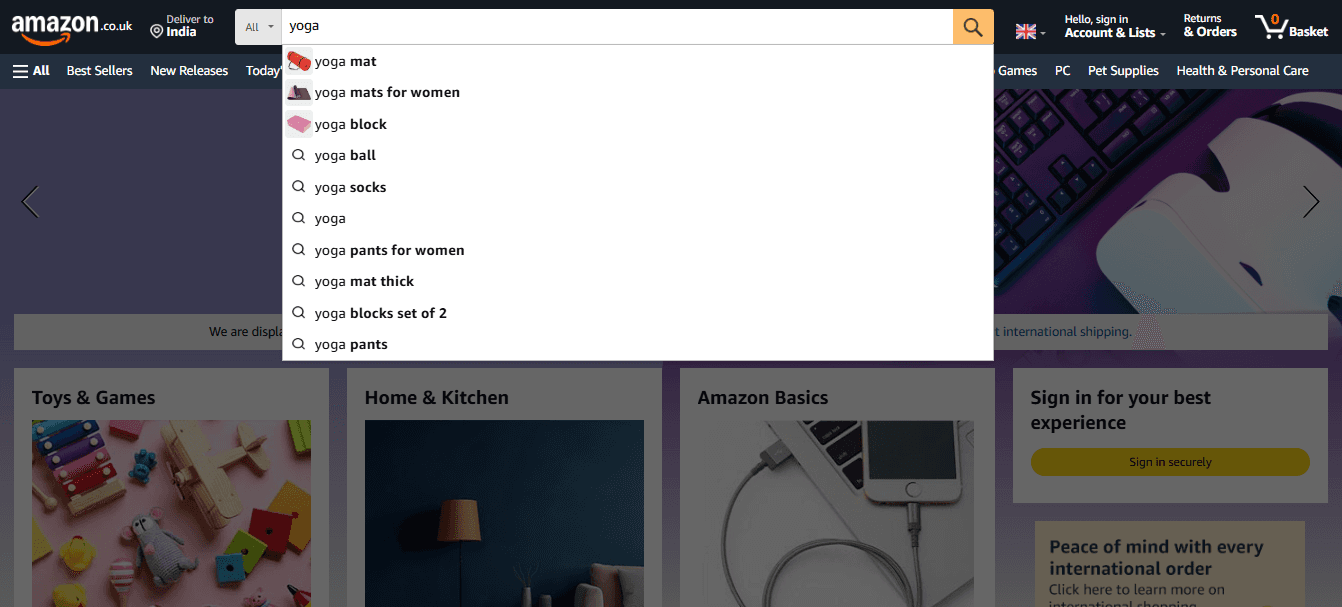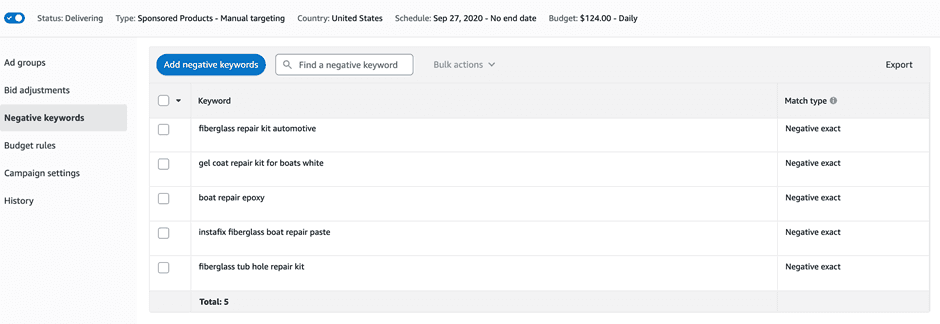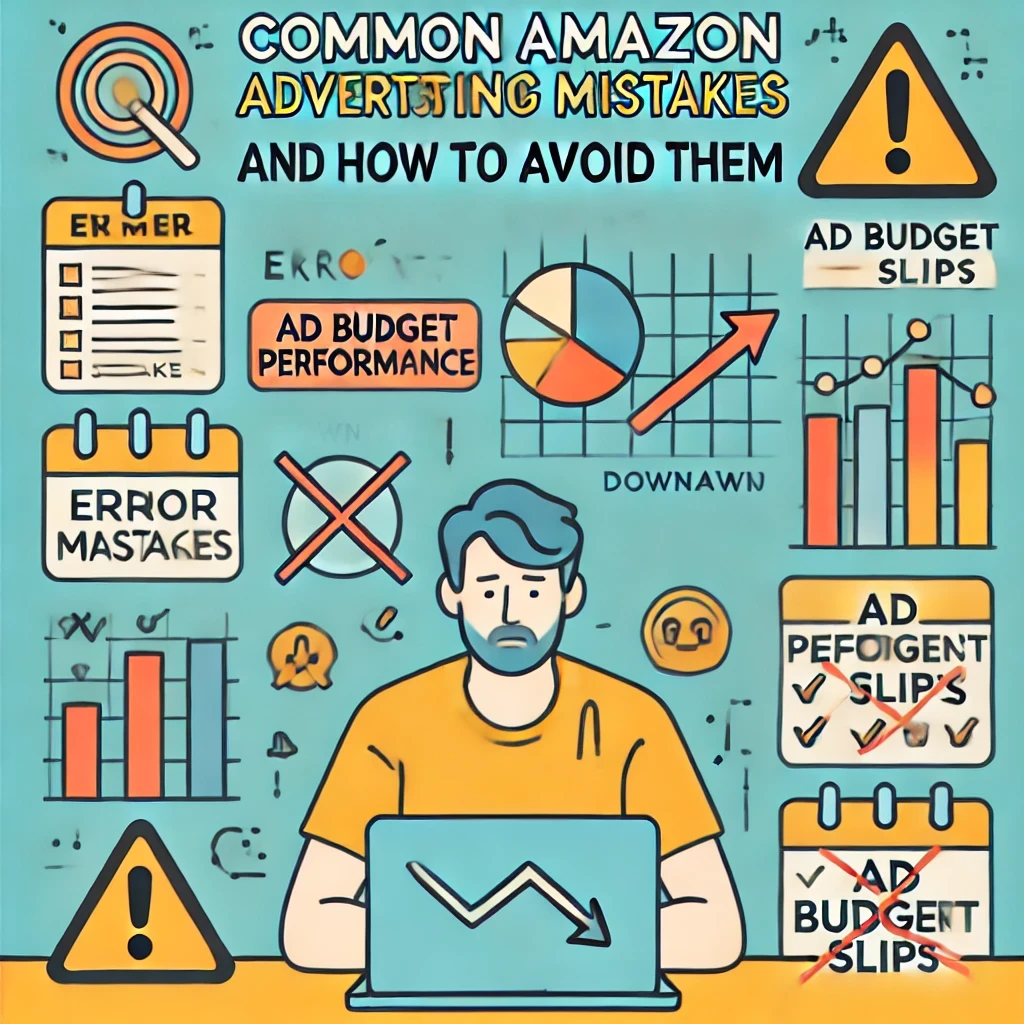Amazon Advertising
TL;DR
Set clear goals for your Amazon ads to measure success and guide decisions.
Use relevant keywords and include negative keywords to avoid wasted spend.
Optimize product listings with strong titles, images, and bullet points.
Regularly monitor performance and adjust bids, keywords, and budgets.
Test different ad types, like Sponsored Brands and Sponsored Display, to reach more audiences.
Prepare for seasonal trends and manage inventory to maintain sales momentum.
Running Amazon ads can boost your product’s visibility and sales, but many sellers make simple mistakes that cost them time and money. A lot of ad budgets go to waste just because campaigns aren’t set up or managed properly. For example, not using negative keywords can lead to overspending, and ignoring performance data means you’re missing chances to improve your results.
The good news is, these common errors are easy to fix. By setting clear goals, choosing the right keywords, and keeping an eye on your campaigns, you can avoid wasting money and get more out of your ads. This guide will walk you through the most frequent mistakes and show you how to prevent them. With a few adjustments, you’ll start running more efficient campaigns, save money, and see better results.
Common Amazon advertising mistakes and how to avoid them
#1 Not having a clear goal for your ads
One of the most frequent missteps is starting a campaign without defining a clear objective. You may be aiming to boost brand visibility, launch a new product, or increase sales for a top-performing item.
Without a clear goal, it’s impossible to measure success or fine-tune your strategy.
How to avoid this:
Set specific, measurable objectives before launching your campaign. For example, aim to achieve a certain ACoS (advertising cost of sales), increase monthly revenue by a certain percentage, or drive a set number of sales.
Use these goals to guide your keyword selection, bid strategy, and ad types.
#2 Using keywords that don’t match what people search
You may select keywords that seem relevant but don’t reflect actual shopper behavior. This often leads to wasted ad spending, low click-through rates (CTR), and poor conversions.
How to avoid this:
Conduct thorough Amazon keyword research using tools like Search Term Report, Amazon auto-complete, Helium 10, or Jungle Scout.

Focus on long-tail keywords that match buyer intent, as they tend to have less competition and better conversion rates.
Continually update your keyword list based on performance data.
#3 Forgetting to add negative keywords
Not using negative keywords is another common mistake that drains ad budgets. Negative keywords prevent your ads from showing for irrelevant searches, helping you avoid clicks that are unlikely to convert.

How to avoid this:
Review your Search Term Reports regularly to identify search queries that don’t lead to conversions.
Add those terms as negative keywords to prevent your ads from appearing for similar searches in the future.
Update your negative keyword list on an ongoing basis to keep your campaigns efficient.
#4 Product listings that are not optimized
No matter how well-targeted your ads are, they won’t perform if your product listing is weak. Poor images, unclear titles, or incomplete bullet points drive shoppers away, leading to low conversions and wasted ad spending.
How to avoid this:
Ensure your product titles include relevant keywords and clearly describe the product.
Use high-quality images and, if possible, videos to help customers make confident buying decisions.
Write concise, benefits-driven bullet points that address customer needs and questions.
Incorporate Amazon Enhanced Brand Content (A+ Content) for an even more professional, engaging listing.
#5 Not trying different types of ads
Many advertisers rely solely on Sponsored Products and overlook other ad types like Sponsored Brands or Sponsored Display ads. While Sponsored Products are effective, they’re not always the best fit for every goal.
How to avoid this:
Test different ad formats to see which works best for your objectives.
Use Sponsored Brands to boost brand awareness and showcase multiple products.
Leverage Sponsored Display ads for retargeting or reaching a new audience segment.
#6 Setting up ads and not checking them
Some sellers set up campaigns and assume they’ll run smoothly without oversight. Unfortunately, performance can shift quickly, and ignoring your campaigns may result in escalating costs and missed opportunities.
How to avoid this:
Check your campaign performance at least once or twice a week, if not daily.
Look for a rise in ACoS, declining CTRs, or changes in keyword performance.
Make adjustments as needed, whether that means pausing underperforming keywords, raising bids on top-performing terms, or refining targeting.
#7 Spending too much on poor-performing keywords
Without regular performance checks, it’s easy to continue bidding on keywords that don’t deliver results. High-cost, low-performing keywords can drain your budget and drag down overall campaign performance.
How to avoid this:
Monitor your Search Term Reports and keyword-level performance.
Lower bids or pause keywords that have high spending but low conversions.
Shift your budget to well-performing keywords to maximize your return on investment.
#8 Not using Sponsored Brand or Display ads
While Sponsored Products dominate Amazon advertising, Sponsored Brand and Amazon Display ads are powerful tools for certain goals, such as boosting brand visibility or retargeting shoppers who didn’t convert.
How to avoid this:
Consider Sponsored Brands to highlight multiple products, promote a product line, or drive traffic to a storefront.
Use Amazon Sponsored Display to retarget shoppers who viewed your product but didn’t buy or to reach new customers in your category.
Run test campaigns with these formats and compare results to your Sponsored Product campaigns.
#9 Only using automatic campaigns
While automatic campaigns are easy to set up, relying solely on them means you’re not taking advantage of more refined targeting. Manual campaigns, on the other hand, give you more control over which keywords and audiences you reach.
How to avoid this:
Start with automatic campaigns to gather data, but don’t stop there.
Use the data from automatic campaigns to identify high-performing keywords and move them into manual campaigns.
Gradually shift more of your ad spend into manual campaigns for greater precision.
#10 Ignoring holiday seasons or trends
Seasonal spikes, holidays, and shopping events like Prime Day, Black Friday, and Christmas can greatly affect shopper behavior. Failing to prepare for these events means missing out on some of the highest-traffic days of the year.
How to avoid this:
Plan campaigns well in advance of major holidays.
Adjust budgets, keywords, and ad copy to match seasonal trends.
Keep an eye on inventory levels to ensure you can meet demand.
#11 Not planning or managing your ad budget
Without a clear budget, you might run out of funds too early or overspend without getting results. Many sellers who skip planning their ad spending end up with poor campaign performance. A well-managed budget helps you stay on track, maximize ROI, and keep your ads running consistently during peak times.
How to avoid this:
Set a monthly budget based on your goals, current performance, and historical data.
Allocate more budget to high-performing campaigns or seasonal promotions.
Use bid adjustments and dayparting strategies to control costs and focus on times when your ads perform best.
You can opt for the Amazon ad agency that manages your ad budget with campaign audit and optimisation.
#12 Running ads on products that are low in stock
Running ads for out-of-stock or low-stock products wastes your budget and can hurt your brand reputation. When shoppers click on your ad and find the item unavailable, it leads to a poor experience and lost sales. Always monitor inventory to ensure you're only promoting products that are ready to ship.
How to avoid this:
Monitor your inventory levels regularly.
Pause campaigns for items that are running low on stock.
Have a plan to quickly restock high-demand items so you can continue running ads without interruption.
Final words
Amazon ads can help grow your business, but common mistakes can hold you back. Unclear goals, poor keyword choices, unoptimized listings, and not checking performance data often waste money and limit results. Avoiding these issues can lead to better sales, smarter spending, and stronger campaign performance.
By setting clear goals, choosing the right ad types, updating your keywords, and keeping an eye on your campaigns, you’ll run more effective ads. Also, preparing for the holiday season and popular shopping events will help your products stand out when shoppers are most active.
If you need help improving your ad strategy, consider working with Amazon professionals. We can guide you in fixing these common mistakes, making your campaigns more efficient, and helping your business succeed on Amazon.









